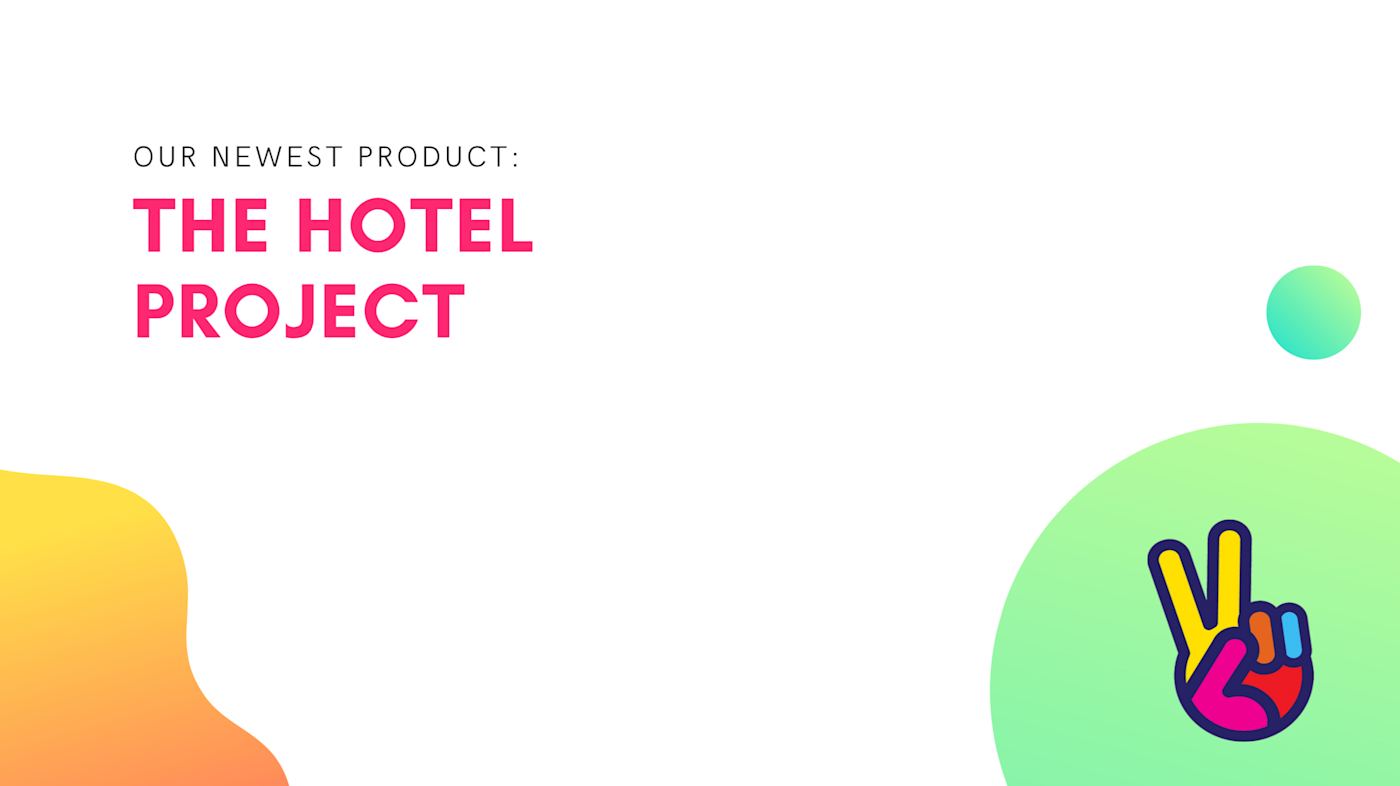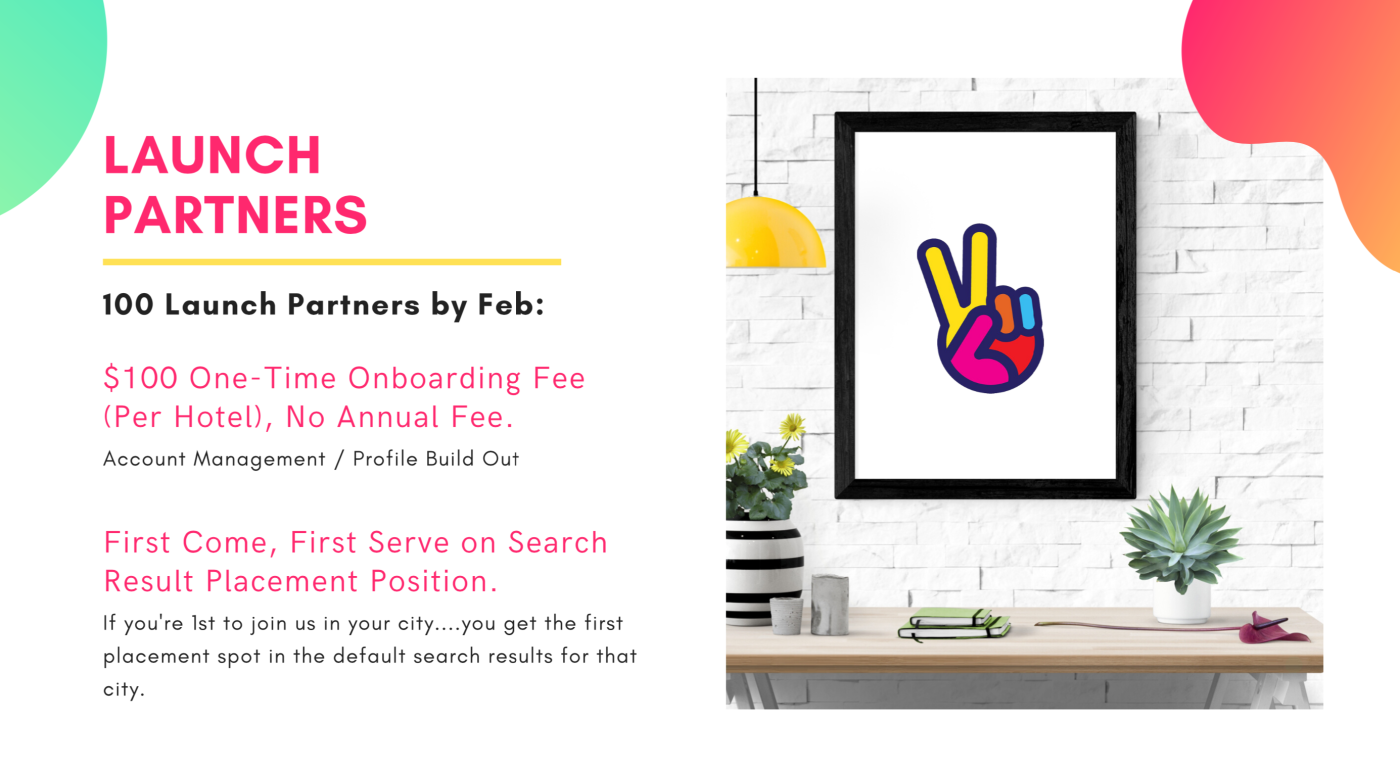We've all heard stories of companies making the big gamble by building a new product. Be it a startup or well-established company, the stories are always the same: sometimes they win, but most of the time they don't. I've personally been on both sides of that story.
For a 100% bootstrapped company, we've been very lucky (with the help of tons of hard work) to be successful in the flight business with Dollar Flight Club. Riding on the expertise we've built in membership-based subscription business models, we decided to give ourselves even more growing room by expanding our product offering into the hotel space. Our most recent product launch at Dollar Flight Club, The Hotel Project, is living proof that your big gamble can pay off.
With only nine employees, we were able to successfully build and launch our product while getting some of the biggest hotel companies on board—before the product even existed. Here's how.
Presentation: looks will sell
While it's true that looks aren't everything, they do play a massive part in the way people behave. I personally have a hard time trusting a website, app, or publication if things don't look put together. I often find myself trusting brands and products more if the branding is fresh and clean. My guess is you do the same, even if you don't notice it.
As a B2C business that operates strictly in the flight space, it was a relatively big departure to work directly with hotel brands. We had some obvious advantages with having over a million travelers using our flight product, but in order to convince hotel brands, especially the big ones, to work with us and give us their money, we needed to look and play the part of having all our ducks in a row.
When we developed the new idea for the hotel product, we knew we would need a minimum viable product (MVP) to deliver for our hotel customers and members, but the branding and mocks alone helped us sell before literally anything even existed. This is all we had:
A sales (pitch) deck for our hotel partners to win their business
Some relatively decent mocks of what we were trying to achieve by stitching together ideas from other products
If you're looking at B2B sales, until your product is live, your pitch deck is really your product. For B2C, you'd replace that with a landing page (assuming you don't have a massive email database already). As you're spinning it up, remember that nothing is set in stone and can always be changed before or after it's live.

Here's what you need for a pitch deck:
A well-designed template. Most tools, like Canva, will have plenty of templates available. Pick one—they'll probably be better than what you can do on your own.
Some sort of logo (you can even use Canva logo maker) and a working name.
An overview of all the juicy details of what your team is doing: short introduction, current problem your customer faces, your proposed solution (reference your mocks in appendix), benefits, timeline to launch, and cost to the customer.
Remember, though: you should be constantly refining and adjusting your deck (or landing page) based on customer feedback, where people get confused during the presentation, and where you run into roadblocks to getting contracts signed. At the end of the day, the customer will tell you exactly what they want—what sells—so make sure to listen. That will inform your MVP.
Assuming you have a decent business idea that gets the potential customer excited, the crux of this presentation really lies with your slide about cost—that's what will determine how fast you acquire those first customers. Which brings me to my next point.
Create urgency through scarcity
A great way to drive interest is by making something seem scarce. Scarcity creates a sense of urgency for anyone who's considering acquiring that product.
You can get creative based on the way your product functions, but there's one thing almost any business can do: practically give your product away for free to the first 100 customers. In our case, when selling to hotels, we also gave priority placement positioning in our directory for the first hotel partners. We took away the majority of the risk for them.

You don't want to give it away for entirely free, though, because they'll be more bought into the success of your product if they have a little skin in the game. If you're not doing a B2B business, you can create urgency by giving early priority access to the product for the first set of customers that input emails, or get even more creative with a referral campaign for early access like Robinhood did.
Once you have your first set of customers, start leveraging those customers in new sales conversations and presentations to win additional business.
Use the right tools
In my experience, the most important part of selling—and even surviving—before you have an actual product is bandwidth. One big area that sucks up the most bandwidth is manually executing tasks that could be handled, or at least sped up, by a computer.
It's worth putting in some time upfront to figure out if there are apps or other tools that can help you do what you need to do, as efficiently as possible. From creative development to lead sourcing to outreach to setting meetings—there is always a solution that will save you time and money. You just need to find it.
Here are a few of the tools we used recently with our hotel product:
Canva for all creative (mocks, logos, presentations, etc.)
Unsplash for royalty- and attribution-free creative
WordPress for quick frontend development
Zapier for helping manage all kinds of processes and connecting our other tools
Stripe for recurring membership management
Mixmax for automating sales outreach
Virtual assistants from Upwork for compiling targeted lead contact info
The list goes on and on. The time we saved on the manual tasks meant we could do more with a smaller team.
Overall, the formula is pretty simple: start with a good idea, present it well to potential customers, create urgency through scarcity to get initial customer adoption, and use good tools to automate processes and operate more efficiently.
We followed our own advice, and in four months, with limited team bandwidth, we launched a scalable hotel product with over 100 paid hotel customers and nearly 1,000 paid members.
This was a guest post from Kyle Maltz, COO, Partner, and Flight Expert at Dollar Flight Club. Kyle oversees all things partnerships and business development for Dollar Flight Club and is responsible for connecting members with some of the best brands in the world; continuing to elevate the Dollar Flight Club member experience through innovation; and delivering great travel news-you-can-use and jaw-dropping deals to exotic places, all while remaining focused on new ways to help travelers explore more and pay less. Kyle's an adventure-loving Seattleite who's busy skiing or traveling the world when he's not helping Dollar Flight Club move mountains. Want to see your work on the Zapier blog? Check out our guidelines and get in touch.





